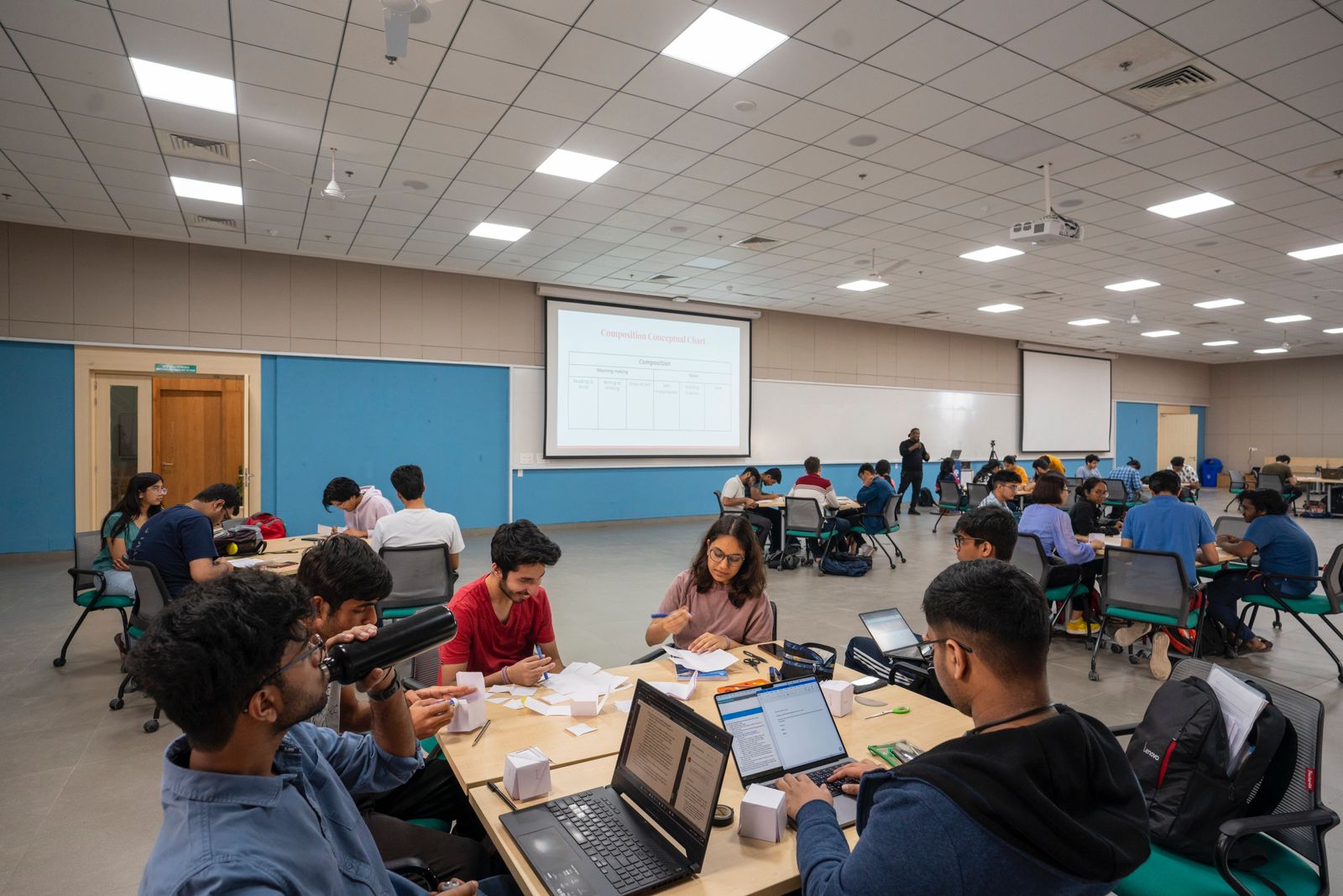
We spoke to Dr. Siddharth, Assistant Professor, Plaksha University, about his approach to teaching, his love for the city of Chandigarh and more. A curious researcher, he enjoys investigating the practical applications of technology and specializes in artificial intelligence, affective computing and computational neuroscience.
Before Plaksha, Dr. Siddharth was a Senior Human Factors Researcher at Microsoft USA’s Human Factors Center of Excellence. He now teaches Machine Learning and Pattern Recognition.
Plaksha: Why did you join Plaksha?
Dr. Siddharth: Plaksha’s vision of reimagining technology education in India captivated me as I planned my return from the US in 2023. Even after 70 years of independence, India has few universities that pursue cutting-edge technological research. Plaksha’s efforts to transform tech education, its impressive faculty and its location near Chandigarh, ‘the city beautiful,’ convinced me that it was the right place for my return to academia.
Plaksha: What is your approach to teaching?
Dr. Siddharth: My teaching philosophy is built on three pillars. Firstly, I view the classroom not as a place to display known facts to students but as a platform where knowledge can be imparted through discussions between the instructor and students. Thus, I frame parts of my lectures in the form of questions and encourage them to discuss possible solutions. I believe that combining this with simple acts like walking around the classroom to individually engage students and inviting them to share their ideas on the board creates an environment that is highly conducive to learning.
Secondly, I believe that students learn best when they witness real-world applications of theoretical concepts, so I use real-time demos linked to relatable topics like cricket, Bollywood and Indian politics. This is also a great way to gather students’ attention towards the tail end of a lecture.
I ensure that students learn industry-relevant concepts by exposing them to current applications and enhancing their course engagement, future skills and job interview performance.
Plaksha: How do you bring experiential learning to the class?
Dr. Siddharth: My courses have a project-based component in which student groups take up projects to solve real-world problems that are either affecting their lives, or are relevant to the population at large. These projects are evaluated not only on their methodology but also the deployability of solutions. This experiential learning component is crucial to gaining hands-on experience in the field and understanding the niches of data collection, identifying biases and preprocessing data, as well as optimizing AI models and evaluating their performance on a bunch of diverse metrics. Many such projects which were wonderfully executed by the students can be found on my course website: ai3011.plaksha.edu.in
Plaksha: What do you look for in a student?
Dr. Siddharth: I look for the ability to exhibit an open mind and connect the dots between concepts from one field and their applications to another. Technological progress in recent years has often stemmed from applying Artificial Intelligence (AI) to diverse fields like healthcare, sports, entertainment, finance, cryptography and defense. It is quite often the case that computational models developed for use in one field could also be tuned to work well in another. The ability to see these connections and adapt models for different applications is crucial for advancing technology.
Plaksha: Can you tell us about a student project that really impressed you?
Dr. Siddharth: Priyansh Desai, Rushiraj Gadhvi and Mayank Mor, fourth year BTech students from my Machine Learning and Pattern Recognition class worked on YogaPal. YogaPal involves detecting and classifying yoga poses done in front of the camera. It recommends adjustments to the user by evaluating the pose and assessing the change.
This way, it guides the user towards the right pose, acting like a personal trainer on the smartphone.
Plaksha: Is there any interesting project you are working on? What is its goal?
Dr. Siddharth: One exciting project involves building a word-level pronunciation error detection and feedback system for local languages with students Arnav Rustagi, Nimrat Kaur and Satvik Bajpai. A key challenge of Computer-Assisted Pronunciation Training (CAPT) methods to help people become better at pronouncing words from a language, is the unavailability of such models to work on Indian languages. Thus, starting with Hindi, we are using an AI model to develop a system that provides targeted feedback on mispronounced speech, modeling Hindi's phoneme sequences. This project will help non-native speakers learn Hindi pronunciation intricacies, with plans to extend it to other Indian languages.
Plaksha: On campus, what is your favorite place to hang out?
Dr. Siddharth: It depends on the weather. During monsoons and winters, I love to be outside enjoying the rains and warm sunshine. I also enjoy Uncle Tonnie's Cafe. Having a chai with students at the cafe and discussing non-academic topics is always memorable. For the rest of the year, when the heat descends upon us, I am likely to be found in the dining hall, l enjoying a cold coffee with my students and colleagues.
Plaksha: What attracted you to Chandigarh?
Dr. Siddharth: There are so many things! From its well-planned architecture to the chaos during the weekends in its vibrant markets, from the serene Sukhna Lake to the many charming Gurudwaras and Mandirs, from the delicious taste of Punjabi food at dhabas spread across the city to the eclectic nature of its many well-maintained parks, Chandigarh provides a quality of life like no other city in India. Its proximity to the Himalayas where I love to go driving is another reason that I absolutely love this city.
Dr. Siddharth is an Assistant Professor at Plaksha University. His profile can be found here.

